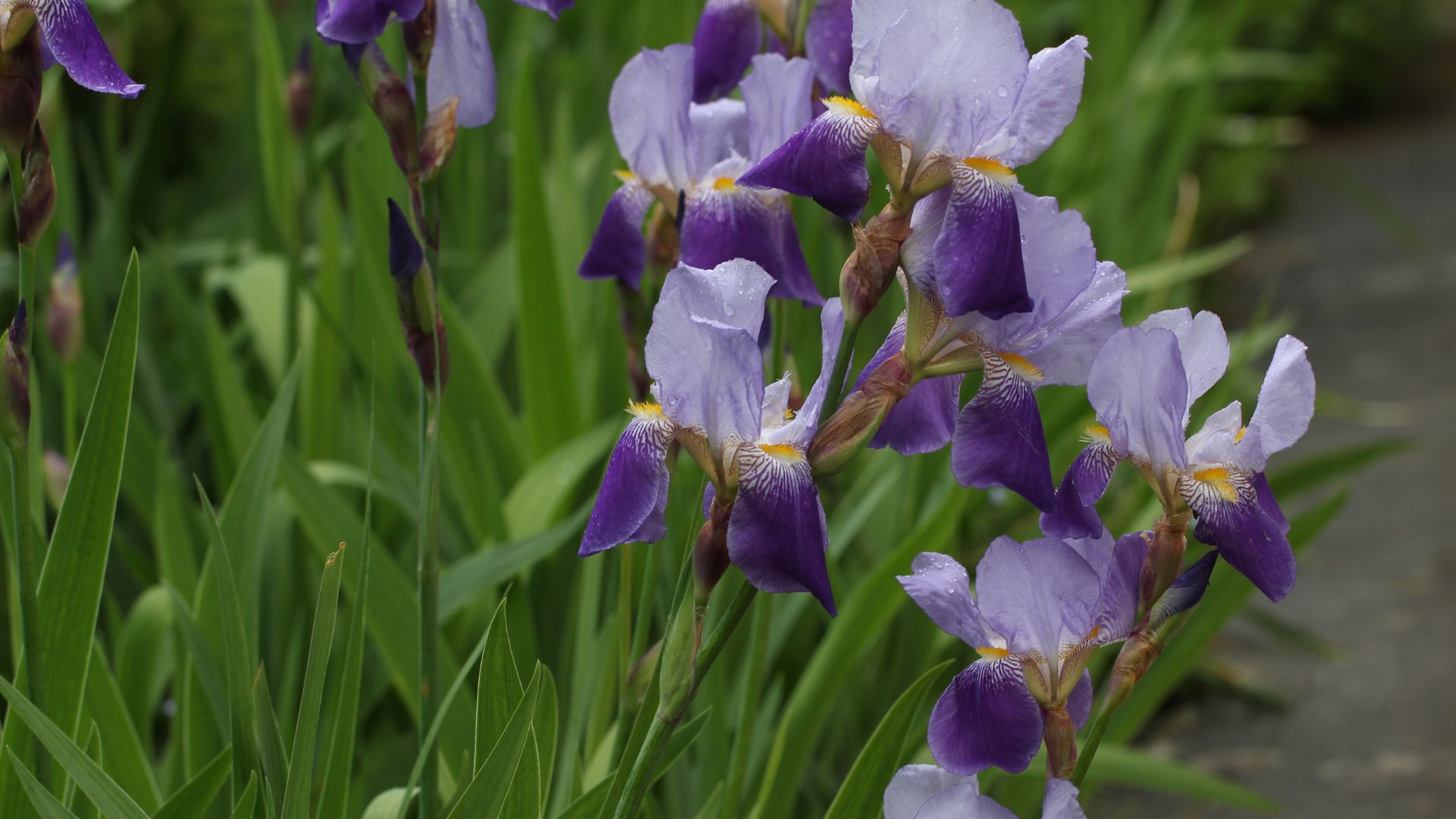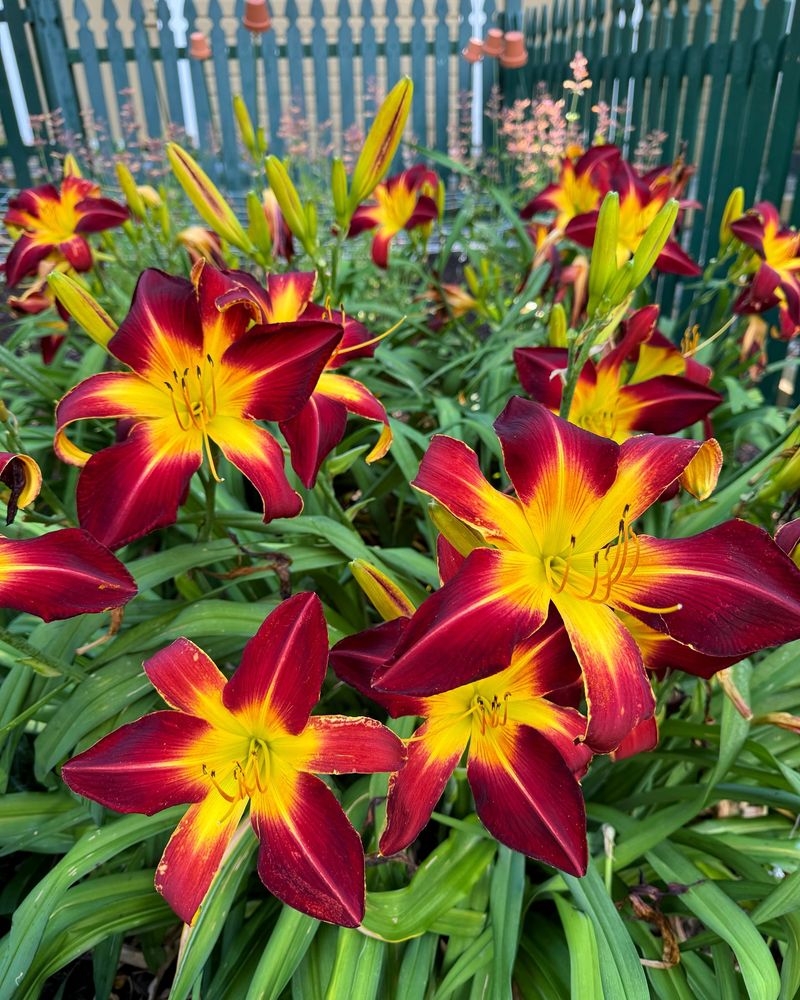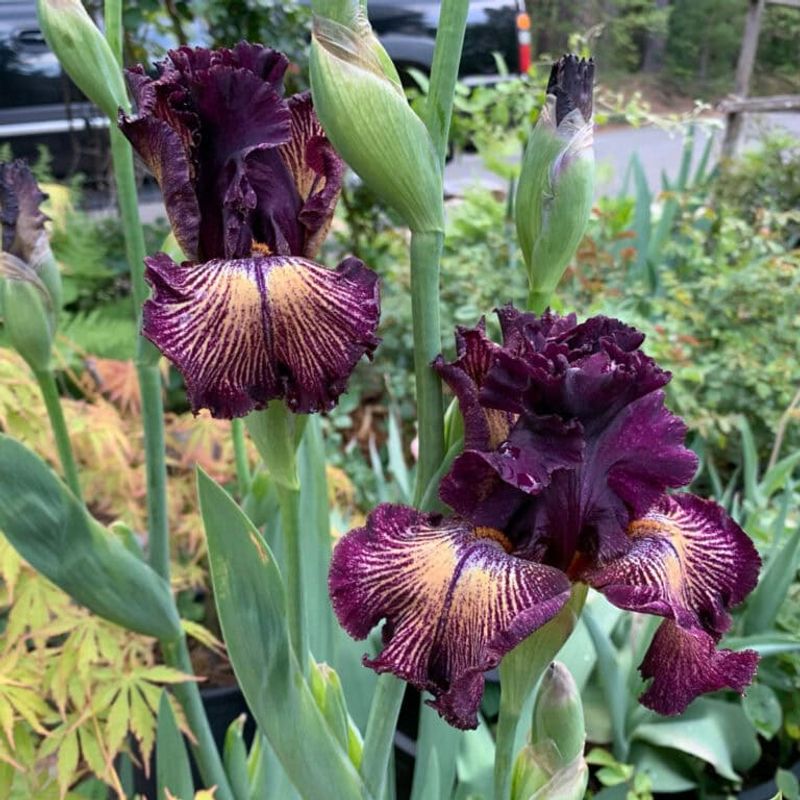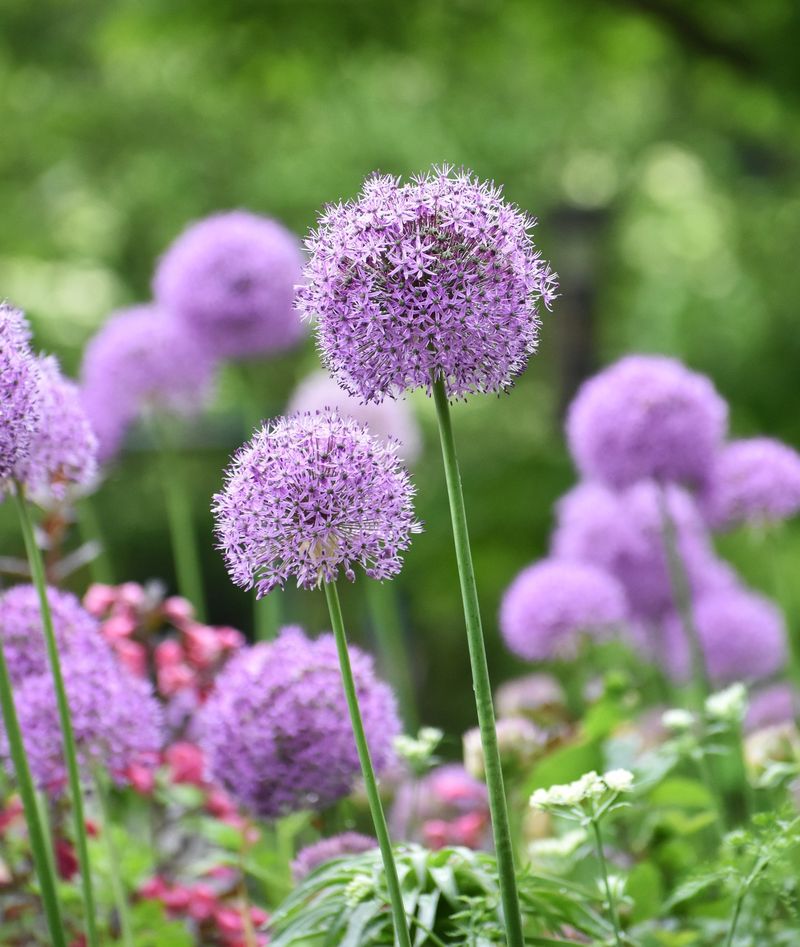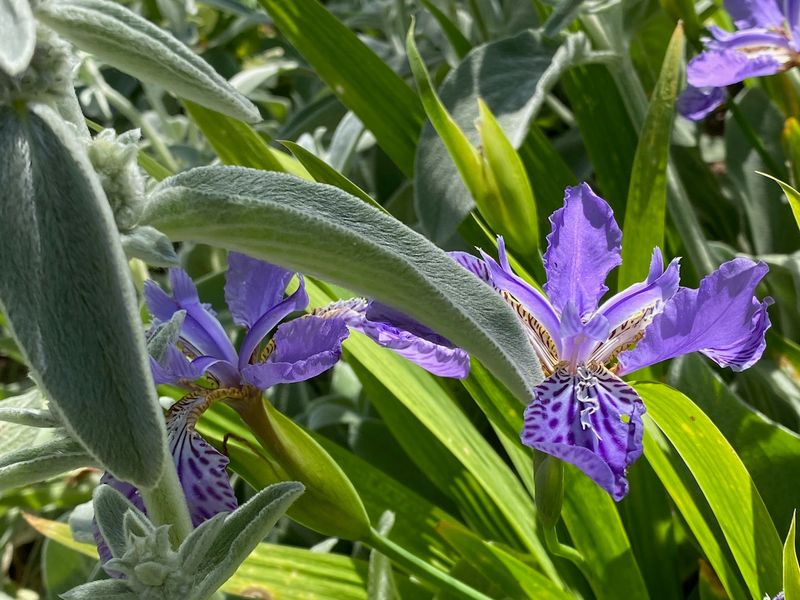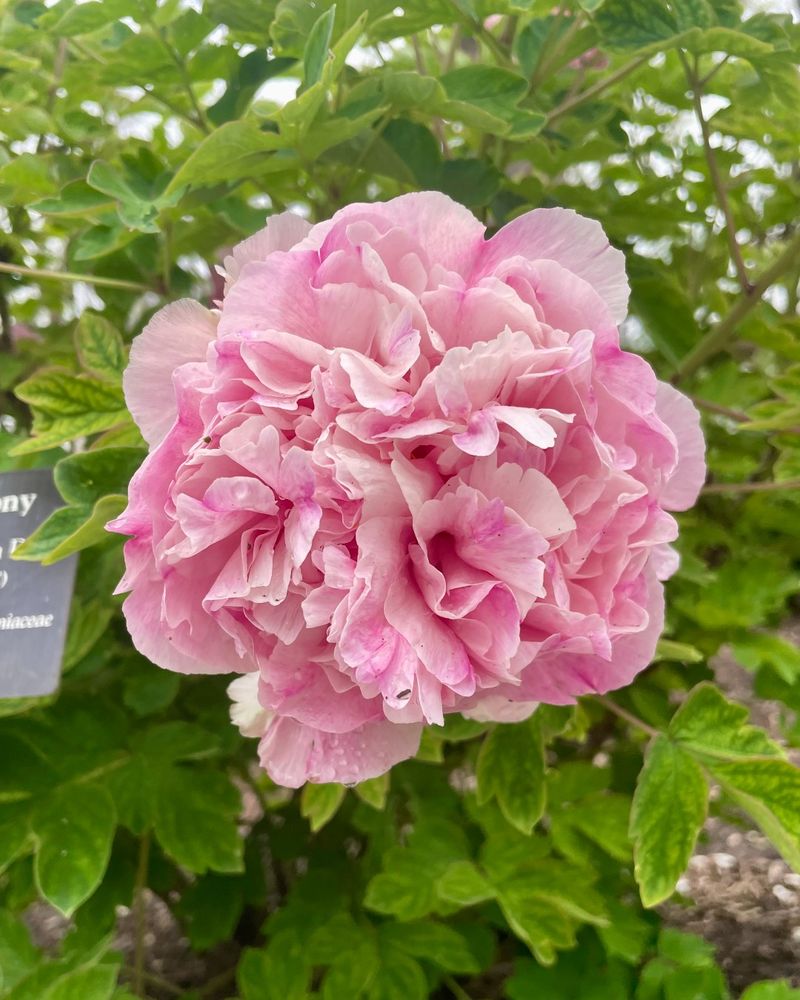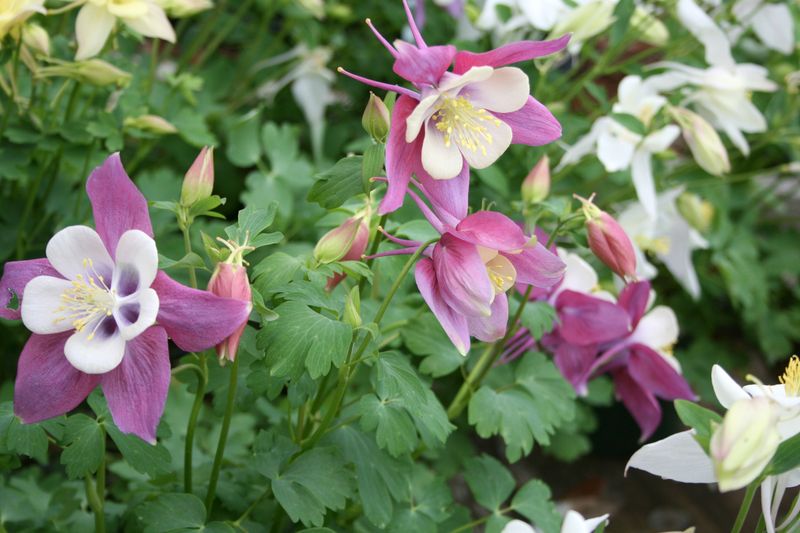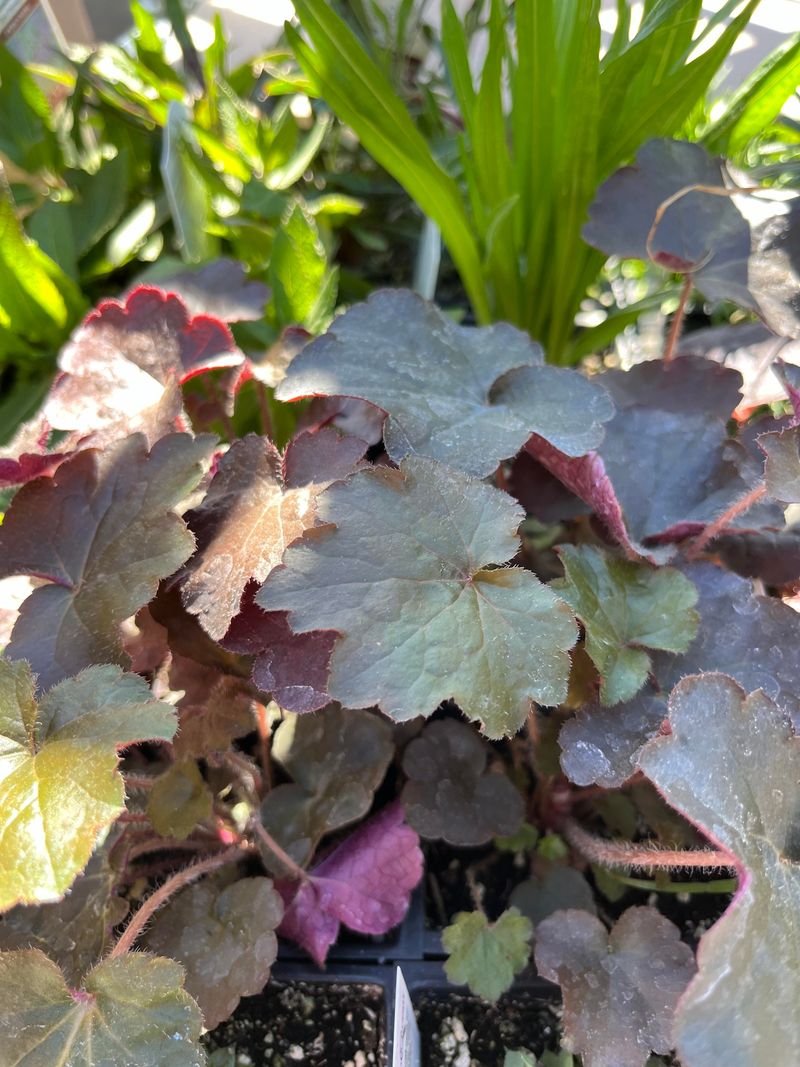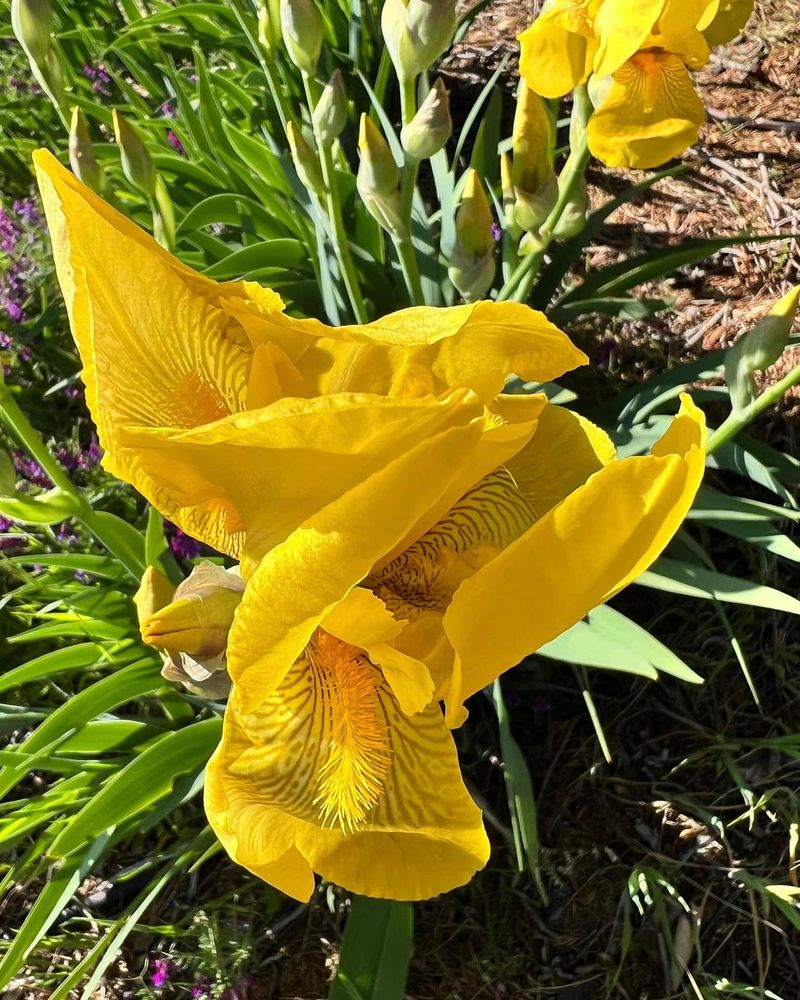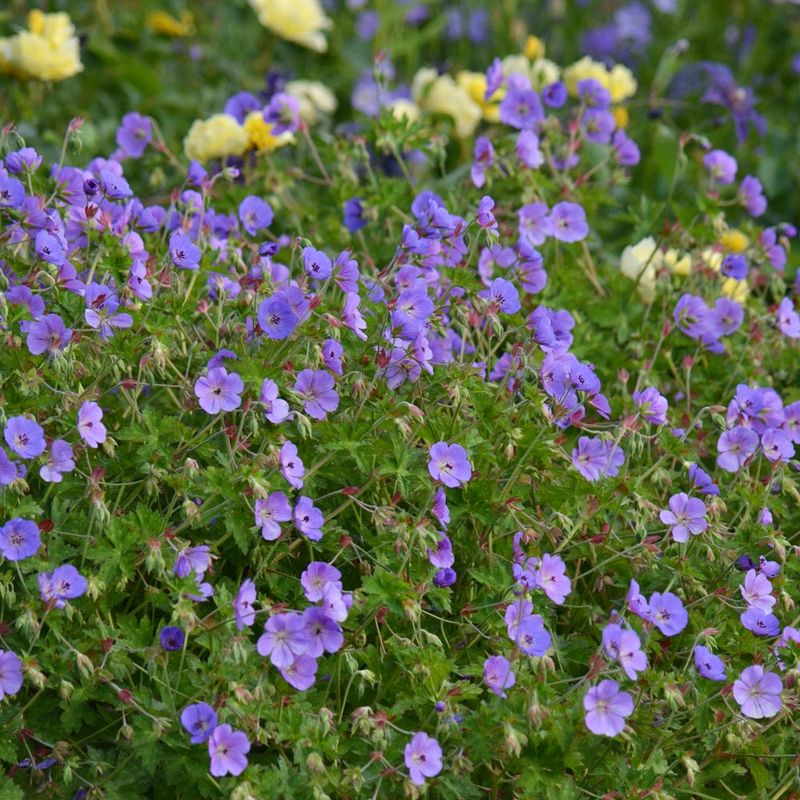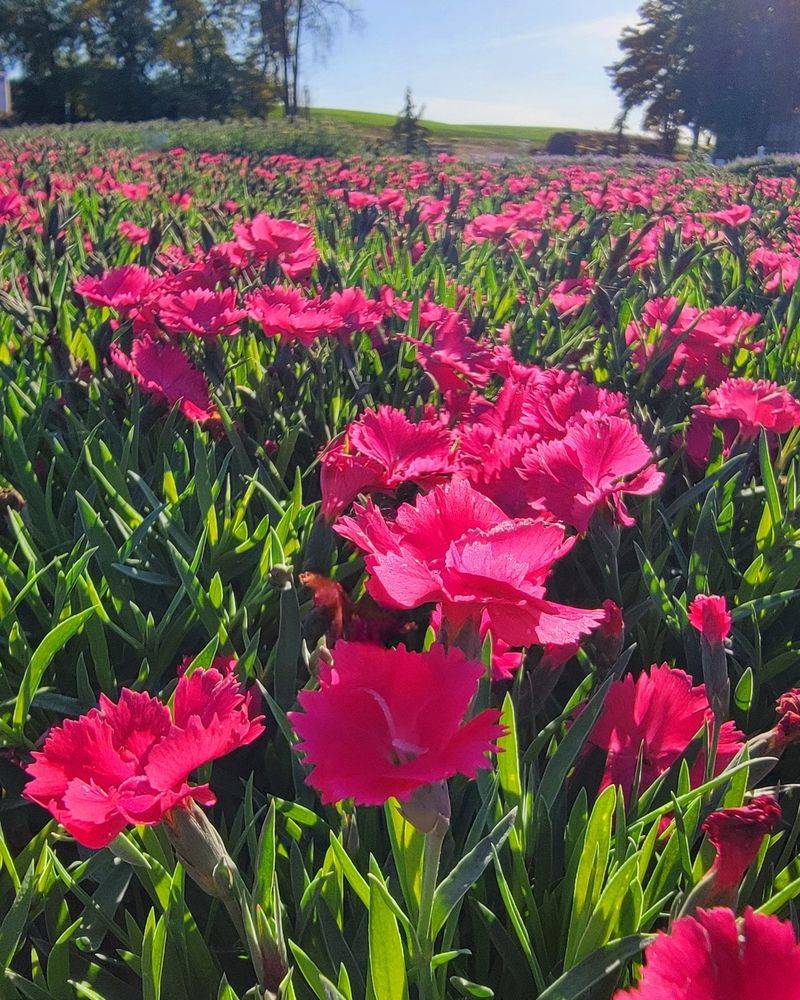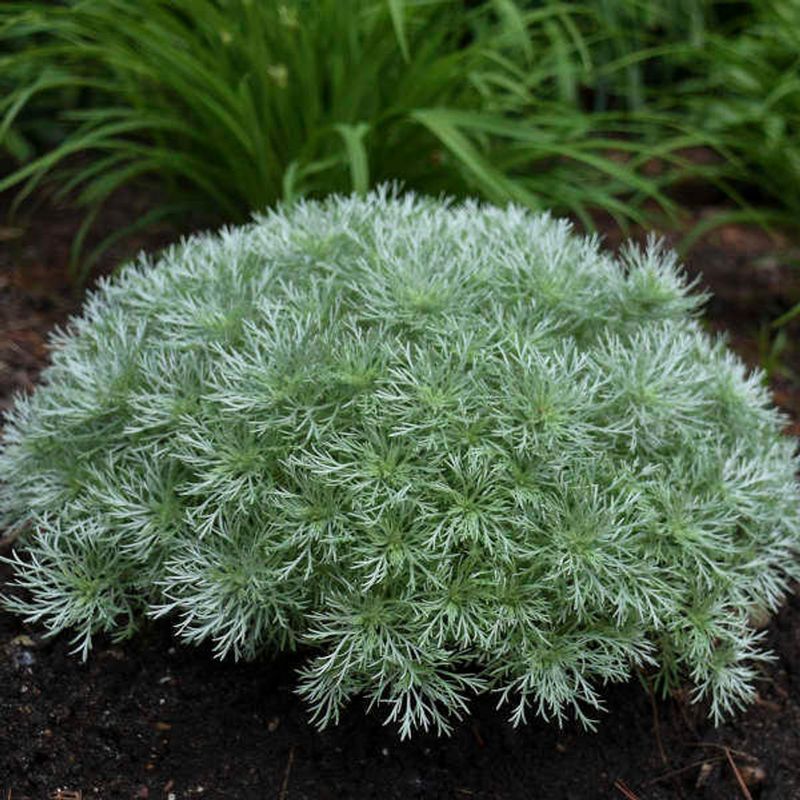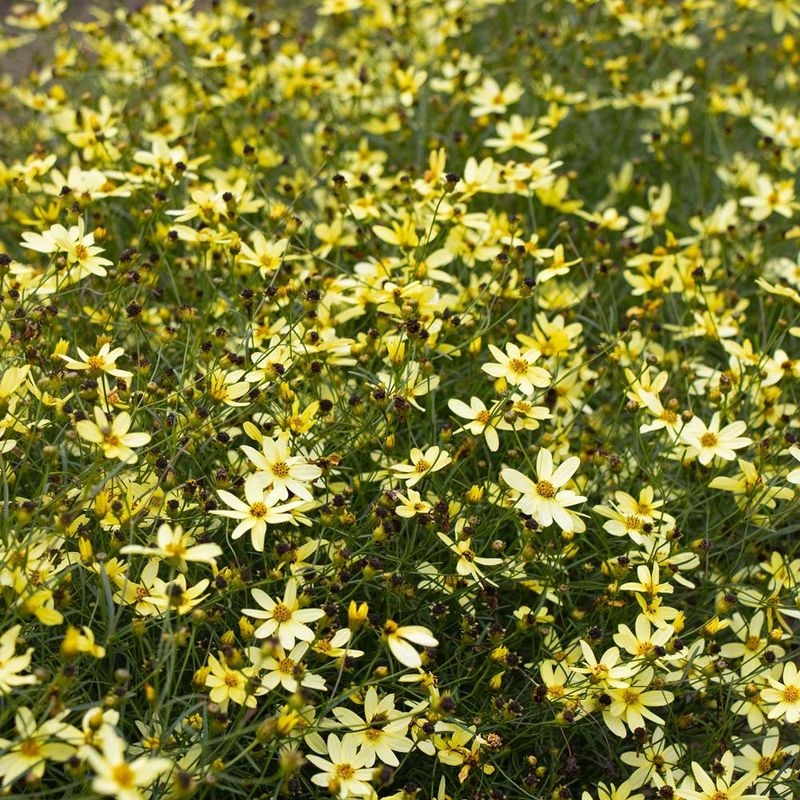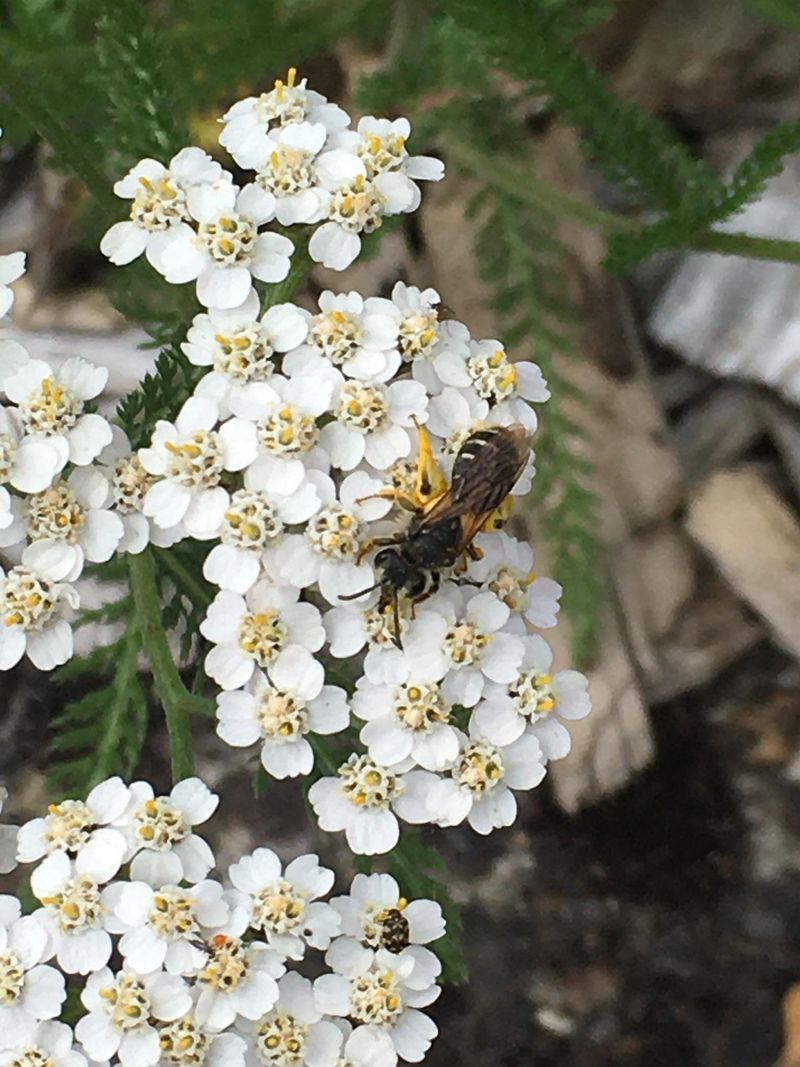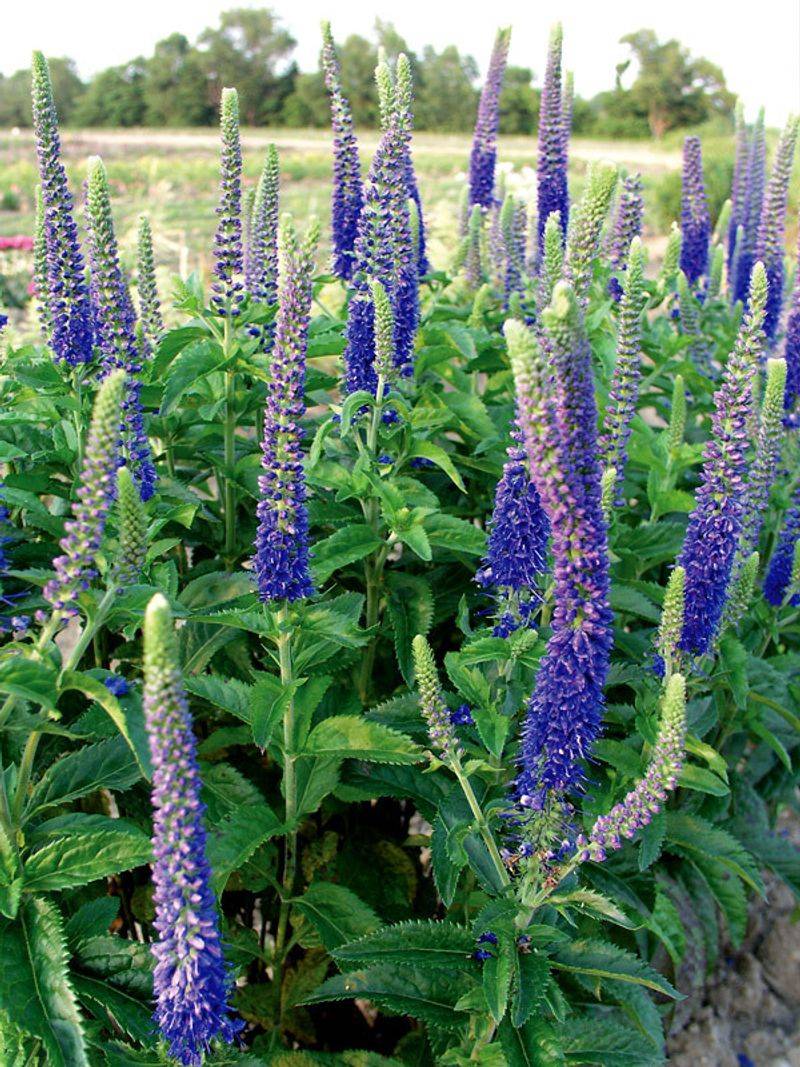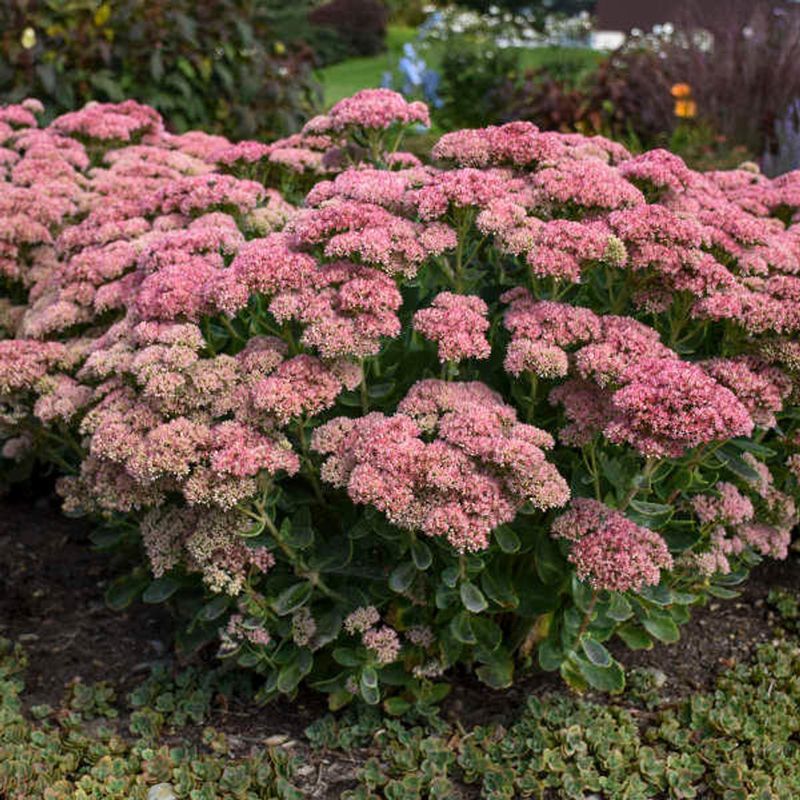Irises bring such a burst of color to the spring garden—it’s hard not to fall in love with them. But they really shine when paired with the right plant neighbors. The right combos make your garden pop and can even help keep pests in check.
Over the years, I’ve found that companion planting isn’t just about looks—it’s about making the most of your space. Some plants help fill in the gaps after the irises fade, while others bring in beneficial bugs or deter the bad ones. It’s a simple way to keep things blooming and balanced.
Whether you’re growing bearded, Siberian, or Japanese irises, choosing the right companions makes a big difference. In this guide, I’ll share some of my favorite pairings to keep your garden beautiful from early spring all the way through fall.
1. Daylilies
These take the spotlight just as irises begin to fade. Their strappy foliage complements the sword-like iris leaves, creating consistent texture throughout your garden beds. I’ve found they’re particularly stunning when you choose varieties with colors that contrast your iris collection.
These tough perennials need almost no maintenance once established. They handle the same well-drained soil that irises prefer but are more forgiving of occasional drought or overwatering mistakes. My orange daylilies look especially striking against purple iris foliage.
Plant them about 18 inches from your iris clumps to give both plants room to expand over the years. The bonus? Daylilies keep delivering blooms for weeks when most spring flowers have disappeared.
2. Catmint (Nepeta)
Low-growing catmint creates a beautiful carpet of gray-green foliage beneath taller iris stems. The lavender-blue flower spikes emerge around the same time as many iris varieties, extending the color show for weeks. My nepeta ‘Walker’s Low’ returns reliably every year without becoming invasive.
Bees absolutely love catmint, making it an excellent pollinator plant. The subtle minty scent deters many garden pests that might otherwise bother your precious irises. When summer heat arrives, a light trimming encourages a fresh flush of blooms.
Try planting catmint along the front edges of your iris beds. The soft, billowing texture makes a perfect transition between pathways and the more architectural iris leaves. In my garden, it’s softened the look of an otherwise formal iris arrangement.
3. Alliums
Allium bulbs planted among iris rhizomes create a magical effect in late spring. Their perfectly round flower heads appear on tall, slim stems just as many iris varieties reach peak bloom. The combination always draws comments from garden visitors who can’t believe I planned the timing so well.
Different allium varieties offer heights from 8 inches to 4 feet, so you can create layers throughout your iris beds. The purple globes of ‘Globemaster’ or ‘Purple Sensation’ particularly complement yellow or white irises. For something unexpected, try the white ‘Mount Everest’ variety with dark purple irises.
Alliums share the same sun and drainage requirements as irises, making them practically foolproof companions. After blooming, their seed heads provide architectural interest well into summer when iris foliage might be looking tired.
4. Lamb’s Ear (Stachys byzantina)
The velvety, silver-gray foliage of lamb’s ear creates a stunning textural contrast with the sleek, upright leaves of irises. This drought-tolerant perennial forms a low mat that helps suppress weeds around iris rhizomes. Last year, I added it to my driest garden bed where it thrived alongside my most resilient irises.
Lamb’s ear spreads gently over time but isn’t aggressive enough to threaten established irises. Its fuzzy leaves catch morning dew, creating a magical sparkle when the sun hits. The pale lavender flower spikes that appear in summer extend the season of interest after iris blooms fade.
For best effect, plant lamb’s ear at the front of your iris bed where you can appreciate its unique texture. The silvery foliage makes iris colors—especially purples and blues—appear more vibrant through the contrast effect.
5. Peonies
Peonies and irises create garden magic when they bloom together in late spring. Their flowering periods overlap just enough to create a spectacular show, while peony foliage remains attractive all season after iris blooms fade. My pink ‘Sarah Bernhardt’ peonies echo the ruffled petals of my similarly colored irises.
Both plants are long-lived perennials that prefer not to be disturbed once established. Plant them about 2-3 feet apart, as peonies grow quite large over time. The combination works especially well in cottage-style gardens where the peony’s lush form softens the more architectural iris shape.
Staking or supporting peonies keeps their heavy blooms from flopping onto iris flowers during rainstorms. For a classic look, try white peonies with blue irises, or for something bolder, deep red peonies with yellow or white iris varieties.
6. Salvias
These begin flowering just as iris blooms start to fade, providing seamless color through early summer. Their upright spikes of blue, purple, or pink flowers complement the iris’s more horizontal form. I’ve had great success pairing deep blue Salvia ‘May Night’ with yellow iris varieties for a striking color contrast.
Most salvias thrive in the same well-drained soil that irises prefer. They’re drought-tolerant once established and rarely troubled by deer or rabbits. The variety ‘East Friesland’ has been particularly reliable in my Zone 5 garden, returning year after year without any special care.
Cutting back spent salvia flower stems often triggers a second bloom cycle later in summer, long after irises have finished. This extended flowering season makes salvias one of the most valuable companions for adding long-lasting color to iris beds.
7. Columbines (Aquilegia)
Delicate columbines weave through iris plantings with their dancing blooms held on slender stems. Their intricate flowers appear at the same time as many iris varieties, creating a captivating contrast between the bold iris blooms and the more detailed columbine flowers.
Columbines self-seed gently, filling in gaps between iris clumps without becoming invasive. They thrive in the same conditions as irises but can tolerate slightly more shade, making them perfect for the edges of iris beds that might receive less direct sun.
After flowering, columbine foliage remains attractive through summer, hiding the sometimes untidy iris leaves. For a naturalistic garden, I let columbines seed themselves around—they always seem to choose the perfect spots to complement neighboring plants.
8. Coral Bells (Heuchera)
The colorful foliage of coral bells creates year-round interest alongside iris plants. Modern heuchera varieties come in shades from lime green to deep purple, offering endless design possibilities. My ‘Caramel’ heucheras provide a warm copper backdrop that makes blue irises absolutely pop.
These shade-tolerant perennials appreciate the dappled light that develops under iris leaves, making them perfect understory plants. Their delicate flower stalks rise above the rounded leaf mounds in early summer, adding vertical interest when iris blooms have finished.
Coral bells retain their colorful leaves through winter in many climates, providing structure when irises have died back. For maximum impact, choose heuchera varieties with colors that either complement or contrast with your iris blooms.
9. Oriental Poppies
The tissue-paper blooms of Oriental poppies create a dramatic focal point when paired with irises. Their flowering times overlap perfectly in late spring, creating a show-stopping display of color and texture. The classic scarlet ‘Beauty of Livermere’ makes an unforgettable statement next to white or purple irises.
Oriental poppies go dormant in summer heat, leaving gaps in the garden. This is actually perfect timing—as the poppies disappear, the iris foliage takes center stage. I’ve learned to plant late-emerging perennials like baby’s breath nearby to fill in when poppies fade away.
Both plants prefer the same well-drained soil and full sun conditions. For a softer look, try salmon-pink poppy varieties like ‘Mrs. Perry’ with complementary iris colors. Just be aware that poppies, like irises, don’t like to be disturbed once established.
10. Baptisia (False Indigo)
Baptisia’s shrub-like form provides architectural interest alongside iris plantings. The blue-green foliage emerges early in spring, creating a beautiful backdrop for iris blooms. Once established, baptisia develops into a substantial plant that anchors the middle or back of perennial borders.
The lupine-like flower spires appear around the same time as mid-season irises. Blue varieties like ‘Blue Wild Indigo’ complement yellow irises perfectly, while newer cultivars in yellow or white offer additional design possibilities. After flowering, the interesting seed pods provide textural contrast to iris foliage.
Both plants share a preference for being left undisturbed, making them perfect long-term garden companions. In my garden, a seven-year-old baptisia has formed a stunning vase-shaped plant that creates the perfect visual weight beside a large clump of Siberian irises.
11. Geranium ‘Rozanne’
This one creates a flowing carpet of violet-blue flowers that perfectly complement the more structured form of irises. This long-blooming perennial begins flowering just as irises fade and continues producing blooms until frost. The rounded leaves and spreading habit soften the base of iris plants when they’re not in bloom.
Unlike many perennial geraniums that go dormant in summer heat, ‘Rozanne’ maintains both its foliage and flowers throughout the growing season. It’s particularly effective when allowed to weave between iris clumps, creating an informal, cottage garden effect.
This adaptable plant tolerates more shade than irises, making it perfect for the edges of iris beds that might receive less direct sun. A light shearing in midsummer rejuvenates the foliage and triggers another flush of blooms.
12. Dianthus (Pinks)
Low-growing dianthus forms tidy mounds of blue-green foliage that complement iris plants beautifully. Their spicy-scented flowers appear around the same time as irises, extending the color show at the front of borders. The compact growth habit makes them perfect for edging iris beds.
‘Firewitch’ has proven especially hardy in my garden, returning reliably for years with minimal care. After the main flush of bloom coinciding with irises, most varieties will continue producing scattered flowers throughout summer.
Both plants prefer similar well-drained, slightly alkaline soil conditions. Dianthus foliage remains evergreen in mild climates, providing winter interest when iris leaves have died back. For a classic combination, try pink dianthus with purple irises or white dianthus with deep blue iris varieties.
13. Artemisia ‘Silver Mound’
The finely textured foliage of Artemisia ‘Silver Mound’ creates a stunning contrast with the bold, sword-like leaves of irises. This compact perennial forms perfect hemispheres of feathery silver foliage that remain attractive all season. When planted in groups of three or five, they create rhythm and repetition in iris beds.
Artemisia thrives in the same sunny, well-drained conditions that irises prefer. The silver foliage makes iris colors appear more vibrant through the contrast effect. I’ve found it particularly effective with deep purple or blue iris varieties, where the color difference is most dramatic.
Unlike some artemisias that can become invasive, ‘Silver Mound’ stays in a tidy clump. A mid-summer trim keeps the mounds looking fresh and prevents the centers from opening up. For maximum impact, position these silver accents where afternoon sun will illuminate their bright foliage.
14. Coreopsis ‘Moonbeam’
The airy texture of Coreopsis ‘Moonbeam’ creates a perfect foil for the more substantial iris leaves. Its pale yellow flowers begin appearing just as irises finish blooming and continue all summer long. The fine, thread-like foliage adds textural diversity to iris plantings that can sometimes look heavy or one-dimensional.
This low-maintenance perennial thrives in the same sunny, well-drained conditions that irises prefer. Unlike some coreopsis varieties that are short-lived, ‘Moonbeam’ forms long-lasting clumps that improve year after year. Regular deadheading extends the bloom period from early summer until frost.
For a color echo effect, pair ‘Moonbeam’ with yellow or white iris varieties. I’ve created a particularly successful combination by planting it near my pale yellow ‘Butter and Sugar’ Siberian iris, where the similar colors appear at different times, creating visual continuity throughout the season.
15. Achillea (Yarrow)
Yarrow’s flat-topped flower clusters create an architectural counterpoint to the more vertical iris blooms. Modern varieties come in colors from soft pastels to vibrant reds and yellows, extending the color palette in iris beds through summer. The ferny foliage provides textural contrast with the broader iris leaves.
Both plants share a preference for full sun and excellent drainage. Yarrow actually helps improve soil conditions for nearby irises by breaking up clay with its deep roots. After the main flush of iris blooms has passed, yarrow takes center stage with weeks of colorful flowers.
For a cohesive look, choose yarrow colors that complement your iris palette. I’ve had success with peachy-pink ‘Terracotta’ yarrow planted among purple and bronze iris varieties. The combination creates a sophisticated color scheme that evolves through the growing season.
16. Veronica ‘Sunny Border Blue’
The deep blue spikes of Veronica ‘Sunny Border Blue’ create vertical accents among iris plantings. Their bloom time begins just as many iris varieties finish, providing continuous color through early summer. The rich blue-purple flowers are especially striking when paired with yellow or white irises.
This compact perennial reaches just 18 inches tall, making it perfect for the middle of borders in front of taller iris varieties. Unlike some veronicas that can be short-lived, ‘Sunny Border Blue’ forms lasting clumps that improve each year. The semi-evergreen foliage provides structure even when the plants aren’t in bloom.
Both plants thrive in full sun and well-drained soil. For an extended display, deadhead spent veronica flower spikes promptly to encourage additional blooms. In my garden, this reliable performer bridges the gap between spring iris season and summer’s peak bloom.
17. Sedum ‘Autumn Joy’
Sedum ‘Autumn Joy’ provides season-long interest alongside iris plantings. Its succulent blue-green leaves form attractive rosettes in spring when irises are blooming. By late summer, the flat-topped flower clusters emerge in soft pink, deepening to rusty red by fall when most iris foliage is looking tired.
The sturdy stems and drought tolerance make this sedum a low-maintenance companion for irises. Both plants prefer similar well-drained soil conditions and full sun exposure. Even in winter, the dried flower heads add structural interest to the garden when covered with frost or snow.
Plant sedums behind lower-growing iris varieties or alongside taller bearded types. I’ve found they work particularly well with Siberian irises, as both plants have a similar vase-shaped growth habit. For maximum impact, group three or five sedum plants together to create a substantial presence among iris clumps.

